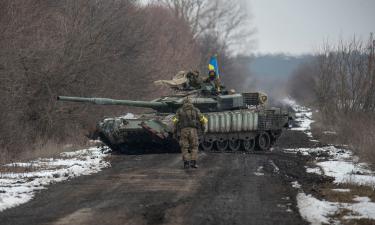The amphibian plane of new generation developed in Russia
The construction of the largest amphibian aircraft is coming to its end at the shipyard Volga, which is on the outskirts of the city of Nizhni Novgorod. The construction process is top secret – the new aircraft does not have any analogues in the world and it is already considered to be an aircraft of the new generation. The technical parameters of the plane are unique; the cost of the project is some $90 million.
The unique development of the Nizhni Novgorod designers has not been exposed to the public for long. The correspondents of Itogi magazine visited the shipyard Volga and saw the new creation with their own eyes – the new vessel-plane that is called Spasatel (Rescuer).
There is no definite answer to the question, what an airfoil boat is – whether it is a flying ship or a sailing plane. Even Rostislav Alekseyev, a well known Russian designer, the founder of the airfoil boat technology, does not know the answer himself. Vladimir Kirillovyh – the chairman of the Russian Central Design Bureau, believes that airfoil boats are the low-flying machines, which use the effect of a screen. A screen – a large reflecting surface - is necessary to make such a plane take off. A screen can be a water surface, a snow field or any other smooth ground surface.
The paradox is that the idea of such an aircraft was born during the Soviet era, but they were not developed for some reason, although seemed that they had would have a bight future. Dmitry Ustinov, who was in charge of the defense industry in 1961, arrived to see the tests of the first airfoil boat SM-1. The senior official was so surprised with that project that he managed to convince the leadership of the country to launch the series production of the plane for army purposes. In 1962 the Central Design Bureau was working on a battle amphibian plane, weighing 450 tons. Two years after the scientists were working on another amphibian airfoil machine for commandos - T-1. A Caspian monster amphibian was ready in 1966. This machine was 100 meters long and could develop the speed of 520 kilometers per hour. In spite of such a big size, an airfoil machine can flying very low above the water and can not be noticed by the radars or ABM systems of the enemy. Vladimir Kirillovyh remembers a story about it: “The testing flight of the Caspian Monster above the water was fixed by an American spy satellite. About 30 NASA and Pentagon generals studied the photographs very attentively. Twenty-seven of them claimed it was a fake that the Russian were bluffing, and only three NASA specialists asserted, the Russians had developed a principally new and very efficient weapon. The new plan for creation of a new kind of defense hardware appeared at the Russian Defense Ministry in 1992. It was about the invention of some defense technology, which would not be meant for carrying the lethal weapon, but for humanitarian goals: searching for the missing people, saving those, who suffer a disaster at sea. This is where the idea of Spasatel comes from. The new amphibian airfoil machine was ordered by the Russian navy. The developers of Spasatel experienced a serious lack of funding during all those years and in the middle of the 90s the project was wrapped up.
A series of tragic events – the sunken submarines, the planes, which fell into the sea and others – showed that there was a strong need in the new rescue means. It was decided to deal with the old project again and to construct a mobile multifunctional amphibian plane, capable of covering several hundreds of kilometers within minutes, land on the water or ice, start the rescue operation. Spasatel was born again, so to speak.
This is what Vladimir Kirillovyh had to say about his new creation: “Spasatel can develop the speed of 550 kilometers per hour, its tonnage is 400 tons, the flight distance – up to three thousand kilometers. It can fly at the height of about three thousand meters, consuming less fuel, than a regular plane does. Spasatel can slide above the water at the height of 1-4 meters, it can take off and land during a strong storm.”
It is planned, there can be a hospital organized inside Spasatel (the machine is 73 meters long and 44 meters wingspan) with an operating-room and a reanimation room. As the specialists of the Central Design Bureau say, Spasatel may launch the new era for the rescue services, since hundreds of vessels suffer disasters at sea every year, thousands of people die just because the help arrives too late. The rescue planes that are commonly used in the rescue operations are far from being sufficient - they can only drop rafts on the water. The new amphibian machines help to solve many problems at once. Despite the advantages of time-saving and speed, there will be the special equipment installed to search for the people, who suffer a disaster. A stormy wind, or a high wave is not a problem for such a machine – in this case it will be like a bob. Spasatel can take off, having 500 people on board. It can just take 700 or 800 people aboard without taking off and wait for another rescue team to arrive.
Vladimir Kirillovyh thinks that Russia is 20 years ahead of other countries in terms of this technology. Of course, Spasatel will not be able to save from all catastrophes and disasters – it can quickly arrive to help those, who life is counted in minutes.
Translated by Dmitry Sudakov
Subscribe to Pravda.Ru Telegram channel, Facebook, RSS!





